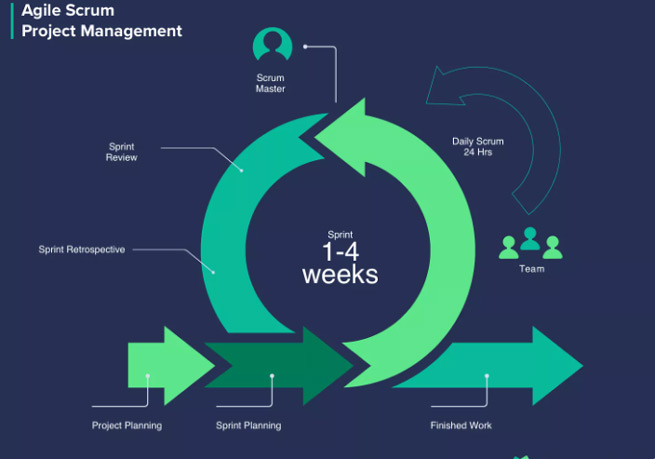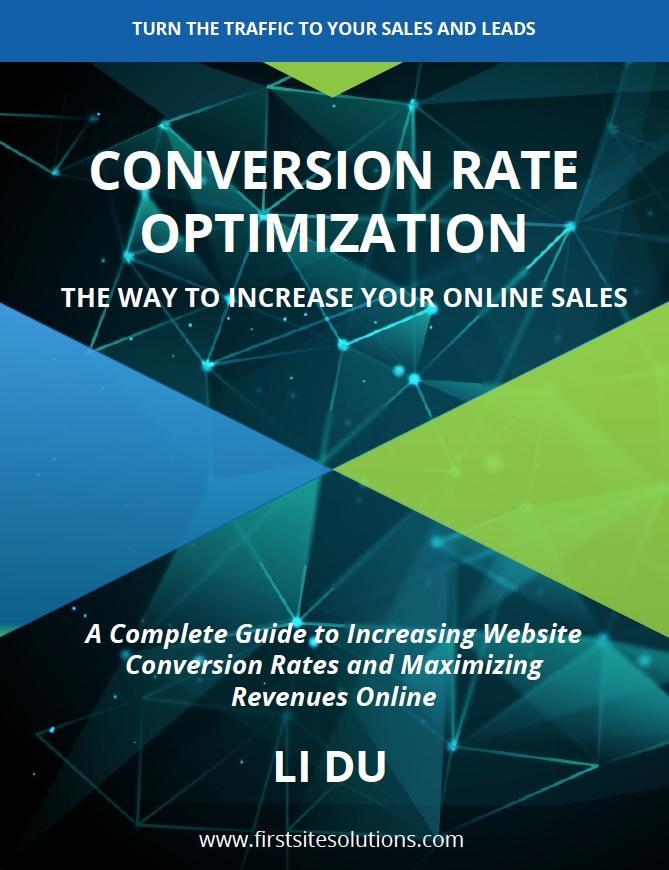
Building a productive SEO project management process could be a complicated task. It needs a lot of careful research, planning, implementation, tracking, reviewing, and more.
Even though, you have to continuously tweak the SEO sprint strategy, since nothing is fixed.
However, an Agile SEO methodology paired with the right project management tool could be a game changer for your agencies.
The guest blog proffers you such informative tips and ways to implement Agile SEO principles to manage your projects and hit all your SEO goals.
What is Agile SEO?
Agile SEO represents an approach to search engine optimization for SEO agency teams that uses agile methodologies, prioritizing collaboration, flexibility, and continuous progress.
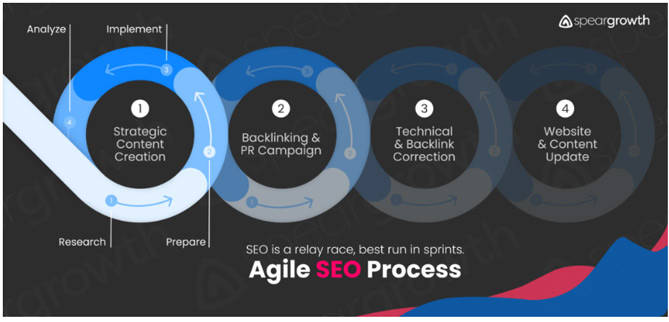
Core Principles
The Agile method indulges various key principles, listing out the core principles
- Prioritizing tasks based on impact and significance.
- Breaking down the larger projects into manageable, small tasks.
- Involves regular reviewing of the progress and making strategy and work adjustments as per requirements.
- Encouraging communication and collaboration among the team members handling the work.
This approach basically divides the SEO strategy into small, achievable tasks described as sprints, lasting typically for 2 to 4 weeks.
This flexible approach paves your SEO agency work for
Faster results:you can see the project progress and iterate quickly on feedback and data.
Greater adaptability: your agency can adjust the strategy to the changes occurring in user behavior, competition, and search engine algorithms.
Improved efficiency: nurture the high-impact tasks, and give priorities, preventing wasting time on the low-impact tasks.
Enhanced collaboration: foster team communication and teamwork between SEO professionals, developers, other stakeholders, and content creators.
How does the Agile SEO approach drive project growth and outcomes at each stage?
Agile SEO project management is defined as the methodology incorporating Agile project management principles with a dynamic world of SEO.
Other Key Principles
Iterative Planning: You can break down the SEO strategy or larger project into smaller sprints, for 2 - 4 weeks. This permits you to make rapid project adjustments whenever needed based on the feedback and performance data.
Prioritization: pivot your focus point on the high influential tasks in your agency. Ensure those tasks must align with the overall SEO goals, checking out efficient use of resources and time.
Data-driven decision making: Continuously tracking the data and assessing the SEO performance by the relevant metrics enables to inform future sprints and strategy optimization.
Flexibility: Being prepared to adapt the project approach at whenever time needed based on competitor analysis, user search intent changes, and algorithm updates.
How do you implement Agile SEO to manage your projects?
You can implement the Agile principle for SEO project management. Here are the breakdown steps, for how you’ll manage the projects using these Agile principles.
Preparation and planning
Determine the project goals, success metrics, and target audience with the client’s input.
Conduct the audit of the relevant data such as user behavior, competitor analysis, and performance metrics.
Select a suitable framework like Scrum, Kanban, or a hybrid-based method based on the team structure and project size.
Use an effort matrix or an impact matrix to determine the high-impact achievable tasks for the initial sprint. Prioritize the tasks.
Opt for the proper SEO project management software and communication channels for your project.
Implementation and Optimization
Define the length of the achievable sprint lasting for 2 - 4 weeks and choose the prioritized tasks from the backlog for every sprint.
Break down the tasks into actionable steps and allocate them to the team members with clear deadlines.
Foster brief daily meetings for the team members to share the progress, determine roadblocks, and collaborate on the solution of the project.
Use the chosen tools like Semrush to visualize the data, like task progress, and monitor the key metrics throughout the sprint.
Performance tracking eases the approach.
Remain flexible and adjust the strategies based on the data insights, and iterations outcomes. You can adapt and frame the strategy from the sprint feedback and emerging opportunities.
Continuous Progress
Evaluate the completed tasks, assess the data, and collect feedback from stakeholders at every sprint end phase.
Once you assess, pick the specific areas demanding improvement in overall strategy, tools, and process for future sprints.
Celebrate the success of the sprints. Recognize the team and reward the team's efforts for maintaining engagement and motivation.
Actionable insights
Gain all the futuristic actions based on all the data-driven decisions on data insights from specific metrics and analytics.
Be prepared to adapt and be flexible to the changes in the project feedback, emerging possibilities, and requirements.
Engage in a collaborative environment where this feedback and open communication have been encouraged.
Step-Wise Procedure of Building Your Projects Using Agile Project Management
By following the sequential steps and assuming the key points, you could efficiently apply the Agile project management approach and principles to maintain and build your projects regardless of the specific nature and unique demands.
Step 1: Explain the merits of the Agile approach to your team.
First of all, your organization has to believe in the Agile mindset. This sort of thinking depends strongly on working for the generic good, not for individual recognition or praise.
Take a look back at the principles of Agile and utilize them to explain why you prefer Agile would work for your team. Explain to everyone how agile works, step by step process and make it involve them in the transition process.
Step 2: Make an efficient plan and craft your SEO project boards
A big first and foremost step kickstarts with equally big thinking.
To start with, begin the first set of Agile projects, you require a perfect roadmap laying out where you plan to take as a SEO company over the next few months, one year or longer than that.
Many software teamwork from a product roadmap and the agencies wish to do annual SEO planning.
A roadmap tool is also available to accomplish this. The goal of this is to help your SEO team perceive where they must spend the efforts, and time. Once you have your roadmap figured out, plan a release schedule for all the sprints.
Map the dates that you’d like to have your completed projects so that you can begin building the matching timelines for the project tasks.
Step 3: Set up your team
Set up the task account for your agile sprints and let every one of the team have a look around.
Craft a few projects letting people test out, allowing them to visually familiarize with how this Agile project management method works out.
This will be a great time for exploring every person’s role in the Agile team.
Start adding a few of the projects you’ve laid out in the tool. See the progress of the entire project visually in the project management dashboard and make team members come together to adapt or raise any changes in the common sprint phase.
Build the tasks one by one and add to the sprint.
Step 4: Break out your Sprints
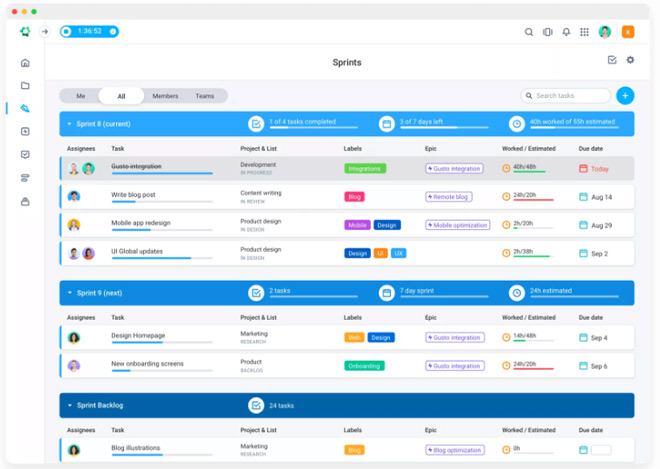
It’s time to begin building your sprints, with the added tasks you crafted.
This is where, as a team, you’ll commit to setting a amount of work for the specific timeframe.
It’s pretty standard for making sprints that lasts for about 1 to 4 weeks, however, this is ultimately up to you and how long on average, it makes the team complete the work.
To commence a new sprint, build the backlog of the current work with all the SEO tasks you’ve already added in the previous step.
After this, add a reasonable count of tasks to every sprint. Over time, you’ll acquire a better feed of how many tasks people could complete in the entire course of the sprint.
After the first 3 sprints, take the average count of tasks or the related story points and utilize this as the benchmark for future sprint planning.
Share the outcomes of the sprint within the team, and with the client thus better collaboration is enhanced.
Be adaptive and flexible to the sprint changes in review and retrospective meetings
Step 5: Start using Stand-ups
Not sure what everyone is working towards the task on every day?
Then Daily stand-up meetings are the rescue. The automated reminders facilitate the team to recap four main things:
- What did they do today?
- What are they working on tomorrow?
- Any roadblocks, feedback or queries they may have?
- Fixing solutions is it performed?
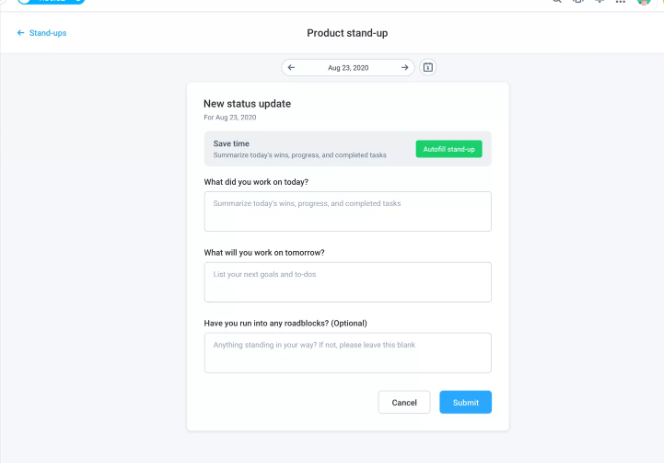
By having the team use the daily standup meetings features, you’ll ensure everyone is on the same track or same page and could benefit to clear the roadblocks before they derail the project tasks.
Step 6: Review your Sprints
After every sprint, take sufficient time to settle down, sit, and think about what has been worked out, what didn’t work out, and what you think can be improved in future sprints.
This will benefit the team to plan future sprints more effectively.
Tips for Managing Tasks With Agile SEO
Getting the hand of the simplest Agile SEO tactics could be confusing sometimes.
Yet, some of the helpful tips can help you focus to get the best out of the preferred agile approach.
After opting for it, start to make sure the following
- Set agency goals from the beginning and clarify them to avoid wasting time.
- Communicate and inform any change in deadlines or plans as soon as possible instead of waiting until the end time period of the sprint cycle..
- Create a comprehensive SEO budget plan from the starting phase and make allowances for any unexpected spending.
- Leverage automation for the tasks as much as possible to minimize burnout and boost the outputs. The agencies would be involved in digital marketing automation for their tasks to save costs and time.
- Have clear KPIs metrics and track them at each sprint, to prevent performance regression or any project inconsistency in the productivity between the team.
Bottom line
Agile is a great approach for your SEO project management as it improves collaboration, enhances workflow, and boosts productivity.
SEO sprints in agile provide a more focused result-driven approach to all digital marketing agencies.
Pick your all-in all-encompassing feature-powered suiting your purpose. Do proper project planning by breaking it down into smaller tasks, and allocating the tasks to the potential team.
Ensure to include the priority of ranking in Google, helpful details, and the task deadline for each process.
Utilize the high potential SEP project management tool for tracking the tasks, making efforts to do the tasks, and seeing your site progress over time for the clients.
At the same time, at every sprint, track the performance metrics at regular intervals. Plan ahead all your SEO tasks to minimize time-wasting and better results.


